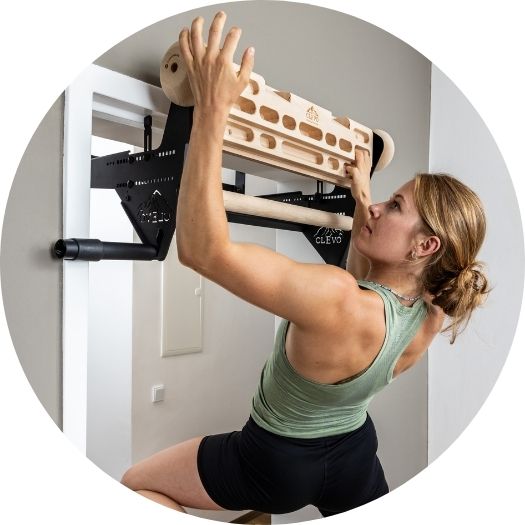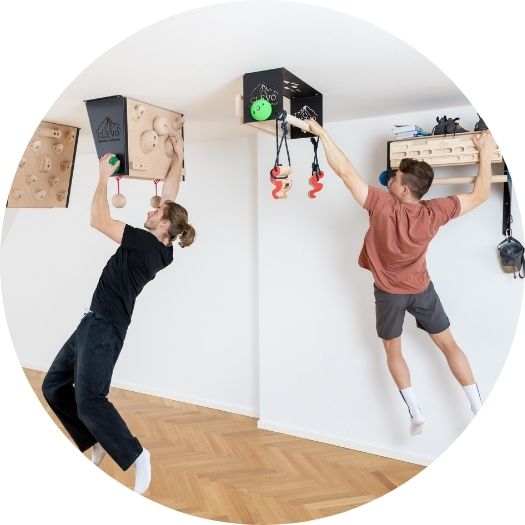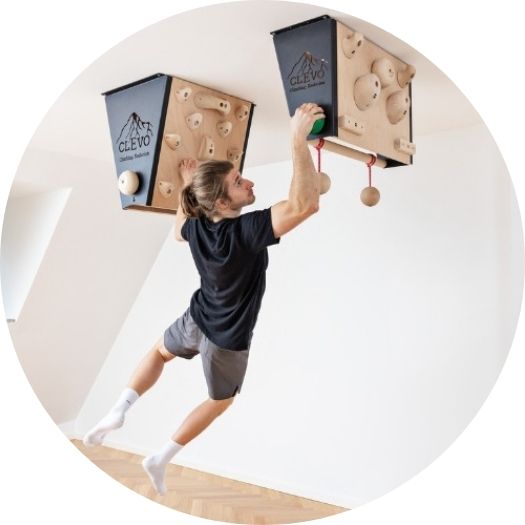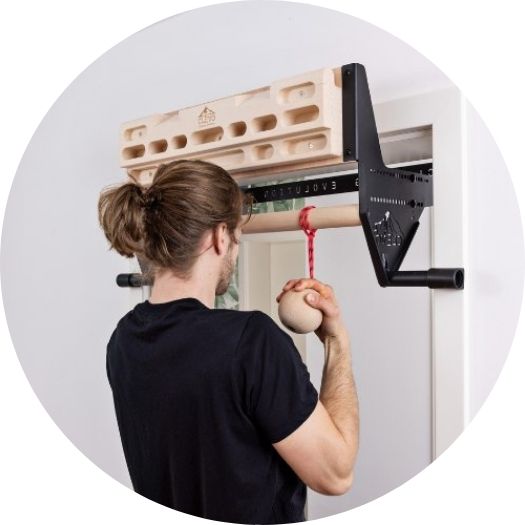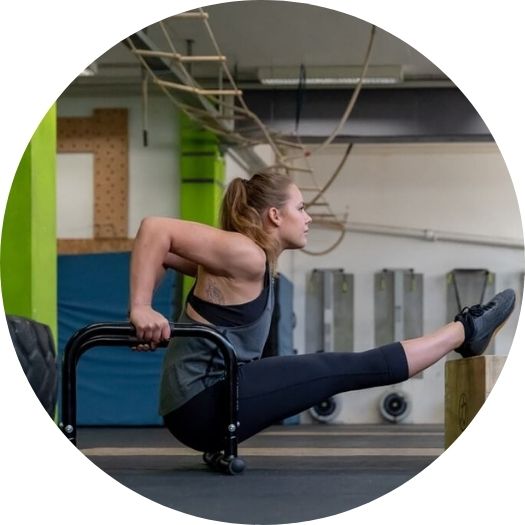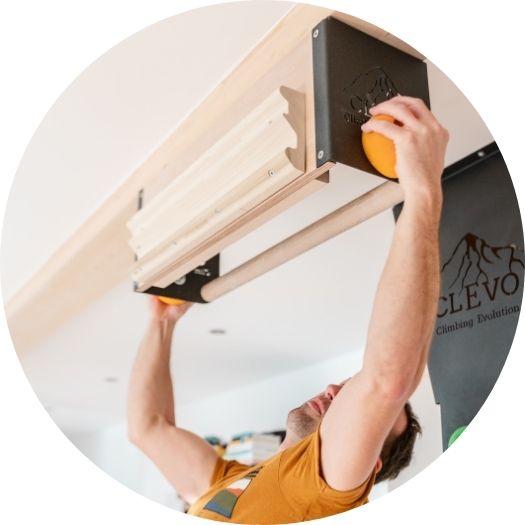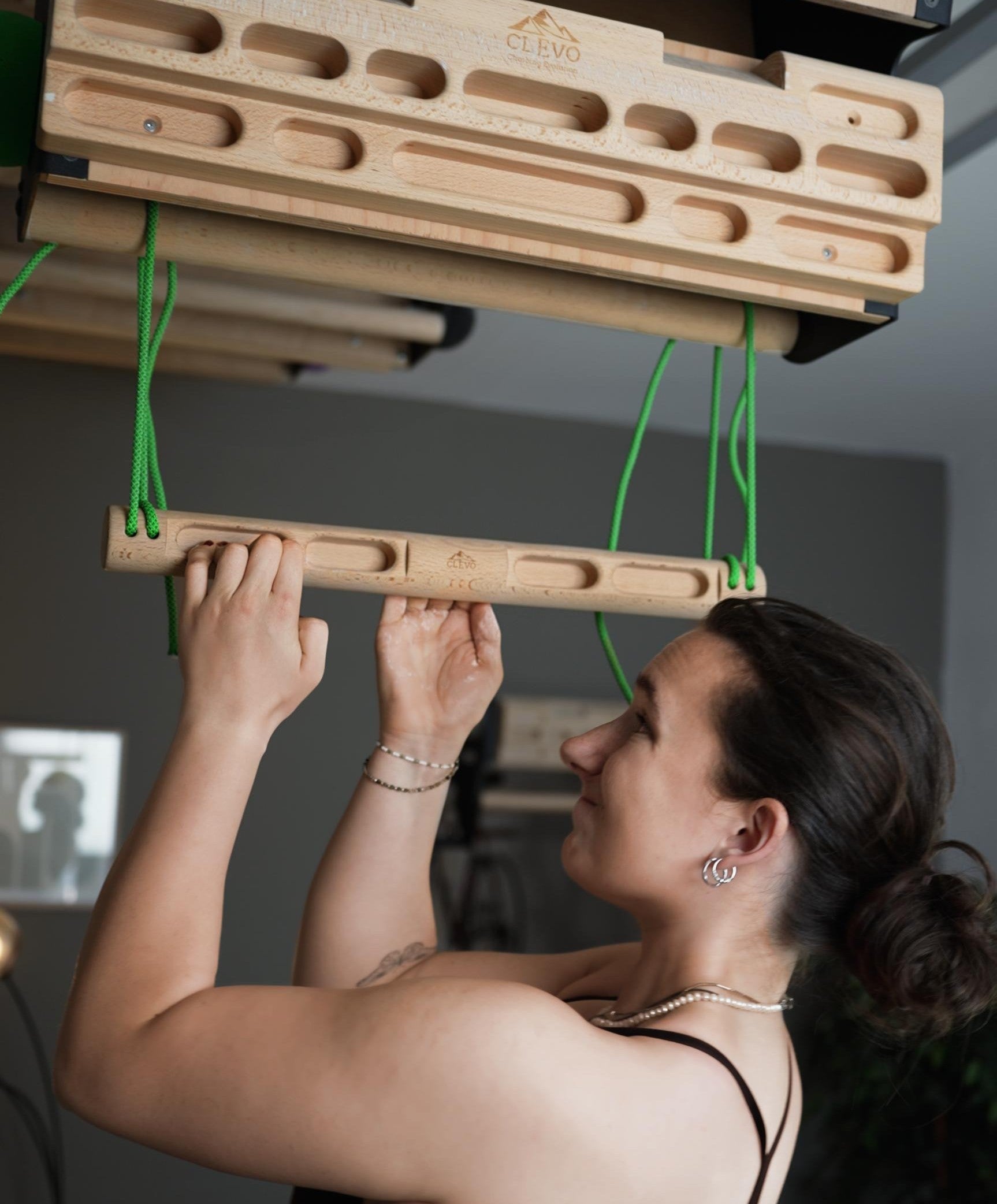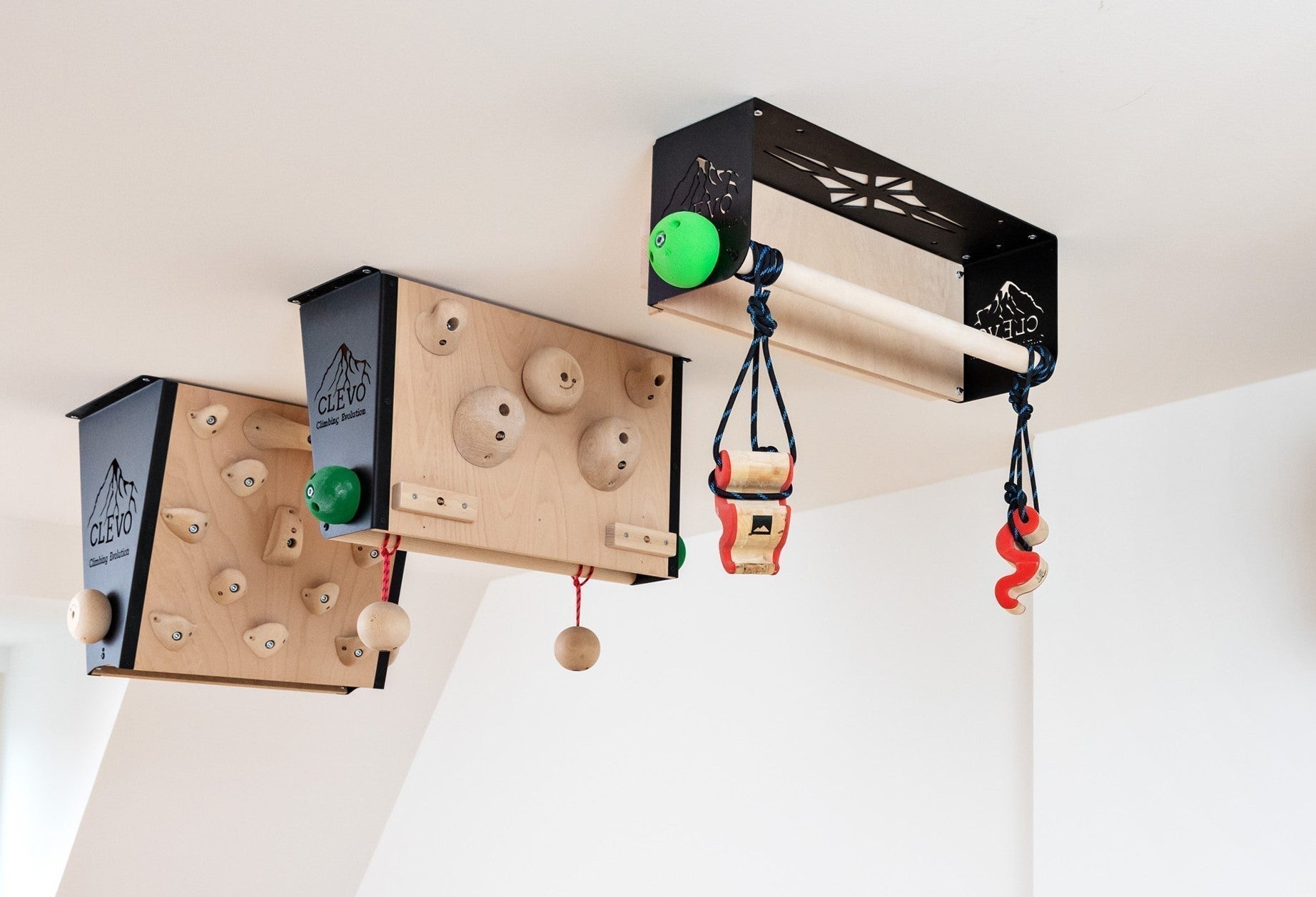Climb stronger - without a climbing gym: how to train effectively at home
Do you love climbing but don't always have time or access to a climbing gym? You don't have to. With targeted climbing-specific strength exercises, you can build up a solid foundation for grip strength, body tension and flexibility at home. In this article, we'll show you six of the most effective exercises that you can use to improve your climbing performance - whether you're training for your next route or simply want to stay fit. All you need is some space and motivation - and you're ready to go!
Body tension is key: why your core is crucial
Anyone who climbs regularly knows that strength alone is not enough. Without a stable core, you lack control on challenging routes. The good news? You can easily train your core stability from home - with the classic self-weight exercise: the plank. But it doesn't always have to be just the forearm support. With the right variations, you can get even more out of it and make your training functional and varied.
Why is core stability so important when it comes to climbing?
Whether on overhangs, dynamic moves or technically demanding slabs: The transfer of power from the torso to the arms and legs is crucial. A strong core makes for a more effective way of climbing.
In summary: the more stable your core is, the more fluid and precise your climbing will be.
Here are two targeted plank exercises that will not only make you sweat, but also prepare you functionally for your next route:
Classic forearm support (plank)
Execution:
Support yourself on your forearms, elbows under your shoulders. Keep your body in one line from head to toe - no hollow back, no hunched back. Pull your belly button slightly towards your spine and activate your buttocks and thighs.
You can of course also lean on your outstretched arms for a slightly easier version. To work your lateral abdominal muscles, you can lean on one arm to one side and support yourself on one side.

Side plank on fitness matt
Duration: Hold for 30-60 seconds, 2-3 repetitions.
Climbing Benefit: Basic training for stability and body tension
Climber's plank with leg raises
Execution:
From the classic plank, alternately lift one straight leg a few centimetres. Make sure that your pelvis remains stable and you don't fall into a hollow back.
Variation: You can also lift your arm and opposite leg diagonally.
Duration: 5-8 repetitions per side, 2-3 rounds.
Climbing benefit: Improves core stability with one-sided loading - just like when climbing on small footholds or one-legged hooks.
Activate opponents: Strengthen your back muscles
If you want to improve your climbing performance in the long term, the best and most sensible approach is to incorporate specific back training into your routine. As mentioned above, bouldering and climbing is all about body tension in order to maintain as many points of contact between your body and the wall as possible. To do this, you need a stable core above all else, and after we've already covered abdominal training, now it's time for the antagonist: your back.
Of course, we can introduce you to classic pull-ups, but that gets pretty monotonous in the long run and you also need a pull-up bar.
That's why we're introducing you to an exercise that combines body tension and back training.
Superman:
Lie on your stomach and raise your arms and legs at the same time to train your back muscles and body tension. Hold the position for 3-5 seconds and repeat the exercise several times.

Superman exercise lying on your stomach
Variation: In a prone position, pull your bent arms out to the side of your body and hold this position for 5 seconds. Perform 10-12 repetitions of this movement.
Climbing benefit: Basic training for stability and body tension
Lunges: strong legs for safe kicks and dynamic movements
When it comes to climbing, many people first think of finger strength and the upper body - but the leg muscles play a central role, especially for long steps, dynamic moves or technical stem climbs. Lunges are a simple but extremely effective exercise to build up precisely this strength - and they can be easily integrated into any home workout.

Lunge forward with band
Lunges train the quadriceps, glutes, hip flexors and stabilization muscles. At the same time, they challenge your balance and body tension, similar to stepping on small steps or stabilizing in long pulls.
Lunge:
Stand upright with your hands on your hips or in front of your chest. Take a large step forward with one leg. Lower your back knee towards the floor in a controlled manner until both knees are at a 90-degree angle. Push yourself back over the front leg to the starting position and switch sides.
Variation: To make this exercise more difficult, you can either hold dumbbells or other weights in your hands while performing the exercise or place your back leg on an elevation such as a bench or similar.
Climbing benefit: More thrust from the leg - especially when pushing up from the wall
Flexible shoulders - guaranteed with this exercise!
A high degree of mobility in your shoulder joint has many advantages for you when it comes to your climbing performance. Strong shoulders are crucial for clean grips, overhead movements and injury prevention. You can also support yourself well in small grottos or corners and push your body weight up without any problems.
If you are still looking for a useful exercise to strengthen your shoulders in the long term, the next exercise is just right for you!
Wall slides:
Stand with your back against a wall, feet 10-15 cm in front of it, lower back slightly pressed against the wall. Bring your arms into a U-shape (elbows at shoulder height, bent at 90°). Keep your elbows, back of your hands and shoulders against the wall. Now slowly bring your arms up as far as you can and then back down again - all while maintaining contact with the wall.
If this is too easy for you in the long run, grab two weight plates of your choice and do the whole thing with this additional weight.
Climbing benefit: Strengthen your rotator cuff and improve your posture
Strong core - strong climbing performance!
As already mentioned at the beginning of the blog article, the core, and therefore also the abdominal muscles, are very important in order to be able to apply sufficient body tension in a sport such as climbing or bouldering. The plank is a good first exercise to strengthen these muscles. However, this is of course just the beginning. Let's continue with the mountain climber, also known as the knee lift.
Mountain climber (holding):
Go into a high push-up (arms stretched under your shoulders). Alternately pull one knee towards your elbow - slowly and in a controlled manner, keeping your core tight. Hold the position for 2-3 seconds on each side without lowering your pelvis.

Starting position mountain climber with sling trainer
Variation: Tighten both knees dynamically alternately (classic "mountain climber") for more endurance stimulation
Climbing benefit: trains core control in complex positions
Build grip strength without equipment? You can!
We've saved the best for last: grip strength training is the number one climbing-specific strength training and is considered an absolute essential for improving your climbing performance. Tools such as hangboards or grip strength trainers help enormously to make this type of training easier. However, this form of training can also be implemented with simple means.
Towel knot:
Take a thin, clean towel. Roll or knot it so that you have to squeeze it tightly with your fingers. Grasp it with one or both hands like a climbing bar - only with your fingers, without your palm. Hold this position for 20-30 seconds - you should clearly feel the tension in your forearms. Pause for 30-60 seconds, then repeat with a different grip variation (e.g. smaller knots, one-handed hold, different finger position).
Variation: hold with one arm for more load; increase the load time
Climbing benefit: Trains isometric holding strength, which is often needed when climbing
🎯 You can improve your climbing-specific strength even without a gym or equipment - with a focus on core, back, legs, shoulders and grip strength. All of the exercises presented are functional, easy to implement and specifically tailored to the requirements of climbing.
Now it's up to you:
Schedule 2-3 sessions per week, combine the exercises sensibly - and get ready for your next project on the wall!
Were we able to help you? Then please leave a comment or share this post so that others can find out how they can improve their performance with climbing-specific strength training from home.
Your Clevo Team

